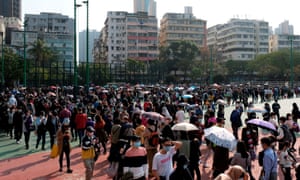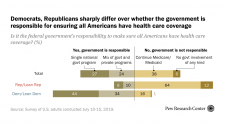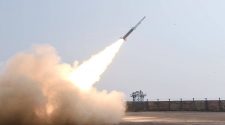Thousands of Hong Kong medical workers have voted to go on strike, calling for the government to close the border with mainland China, as the death toll from the Coronavirus outbreak rose to 304.
The financial hub had 13 confirmed cases of the disease as of Saturday, with 112 patients isolated. Across China, there were 2,590 new confirmed infections on Saturday, bringing the total to 14,380. All of the 45 new deaths recorded were in Hubei province, the epicentre of the outbreak.
In the neighbouring city of Huanggang, six officials were fired over “poor performance” in handling the outbreak, the official Xinhua news agency reported. It cited the mayor as saying the city’s ability to treat patients remained inadequate and that there was a severe shortage of medical supplies such as protective suits and medical masks.
In Hong Kong, more than 3,000 public hospital staff, including doctors and nurses, agreed to a week of phased strike action starting on Monday if the government failed to meet their demands.
Winnie Yu, chairwoman of the Hospital Authority Employees Alliance (HAEA), said: “If we do not curb the source [of the virus], the resources of epidemic prevention and manpower will never be enough. We don’t want to go on strike, but the government has been ignoring the demands of the frontline medical workers. We have no choice.”
The HAEA will meet representatives from their employer – the city’s hospital authority – on Sunday for talks. The newly formed alliance said 9,000 of its members – or 10% of the city’s workforce – backed the strike. The HAEA, formed out of the recent pro-democracy protests, says it has a total of 18,000 members.
China is facing increasing global isolation as dozens of airlines suspended flights and countries including the US, Australia, Italy, Singapore, Uzbekistan, Vietnam and Mongolia restricted or banned foreign arrivals from China.
The World Health Organization this week declared the outbreak a public health emergency of international concern, but said global trade and travel restrictions were not needed.

Some countries are still trying to evacuate hundreds of their citizens. Australia on Sunday backed down on plans to charge its evacuees $1,000 to be taken to quarantine on Christmas Island, and a plane carrying 100 German citizens and 24 foreign nationals – mainly Chinese – eventually landed in Frankfurt on Saturday afternoon after being delayed by Russia’s refusal to let it land and refuel. Moscow airport said it had a “lack of capacity” and the Airbus A310 jet was forced to stop in Helsinki instead.
The Russian military will start evacuating Russian citizens on Monday, according to multiple domestic media reports.
In China itself, cities and villages are becoming ghost towns, with about 50 million people in Hubei province alone under lockdown and many more living under self-imposed quarantine.
What is the virus causing illness in Wuhan?
It is a member of the coronavirus family that has never been encountered before. Like other coronaviruses, it has come from animals, or possibly seafood. New and troubling viruses usually originate in animal hosts. Ebola and flu are examples.
What other coronaviruses have there been?
Severe acute respiratory syndrome (Sars) and Middle Eastern respiratory syndrome (Mers) are both caused by coronaviruses that came from animals.
What are the symptoms of the Wuhan coronavirus?
The virus causes pneumonia. Those who have fallen ill are reported to suffer coughs, fever and breathing difficulties. In severe cases there can be organ failure. As this is viral pneumonia, antibiotics are of no use. The antiviral drugs we have against flu will not work. If people are admitted to hospital, they may get support for their lungs and other organs as well as fluids. Recovery will depend on the strength of their immune system. Many of those who have died are known to have been already in poor health.
Is the virus being transmitted from one person to another?
Human to human transmission has been confirmed by China’s national health commission. As of January 30, the death toll in China stands at 170, with 7,711 confirmed cases of infections. In the past week, the number of confirmed infections has more than tripled and cases have been found in 13 provinces, as well as the municipalities of Beijing, Shanghai, Chongqing and Tianjin. The virus has also been confirmed outside China, in Hong Kong, Macau, Japan, Nepal, Singapore, South Korea, Taiwan, Thailand, the US, and Vietnam. There have been two confirmed cases in the UK. The actual number to have contracted the virus could be far higher as people with mild symptoms may not have been detected. Modelling by WHO experts at Imperial College London suggests there could be as many as 100,000 cases, with uncertainty putting the margins between 30,000 and 200,000.
How worried are the experts?
There were fears that the coronavirus might spread more widely during the week-long lunar new year holidays, which start on 24 January, when millions of Chinese travel home to celebrate, but the festivities have largely been cancelled and Wuhan and other Chinese cities are in lockdown.
At what point should you go to the doctor if you have a cough, say?
Unless you have recently travelled to China or been in contact with someone infected with the virus, then you should treat any cough or cold symptoms as normal. The NHS advises that there is generally no need to visit a doctor for a cough unless it is persistent or you are having other symptoms such as chest pain, difficulty breathing or you feel very unwell.
Should we panic?
No. The spread of the virus outside China is worrying but not an unexpected development. It increases the likelihood that the World Health Organization will declare the outbreak to be a public health emergency of international concern on Thursday evening. The key concerns are how transmissible this new coronavirus is between people and what proportion become severely ill and end up in hospital.
Sarah Boseley Health editor and Hannah Devlin
In Hubei, roads have been sealed off and public transport shut down, and the province extended its Lunar New Year holiday break to 13 February in a bid to reduce travel and contain the outbreak. However, the province is not totally sealed. People are leaving Hubei on foot over a bridge spanning the Yangtze river, entering Jiujiang city in neighbouring Jiangxi province.
Lu Yuejin, a 50-year-old farmer from a village on the Hubei side of the bridge, was trying to gain passage for her daughter, who has leukaemia, on Saturday. “Please, take my daughter. I don’t need to go past … please, just let my daughter go past,” Lu told police as a loudspeaker played a pre-recorded message that residents would not be allowed past to Jiujiang.

Eventually, Lu and her daughter were both allowed through and an ambulance was called to pick them up.
In Hong Kong, if no deal is reached with city authorities, around a third of the 9,000 health workers – those who work in non-essential positions – would first go on strike on Monday. The rest, who provide emergency services, would later join a four-day strike.
Hong Kong’s hospital authority on Saturday said it would come up with a contingency plan.
The city’s pro-Beijing administration has resisted public pressure to completely close its border, although it has reduced access at several lesser-used crossings, with the city’s chief executive saying on Friday a full closure was not feasible.
Associated Press, Reuters and Agence France-Presse contributed to this report















